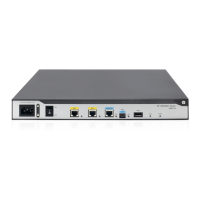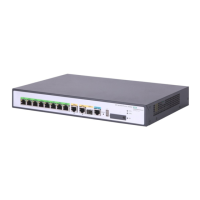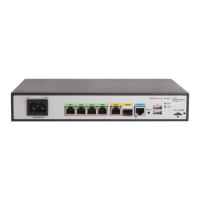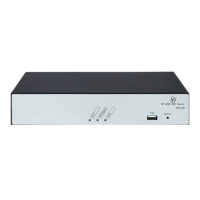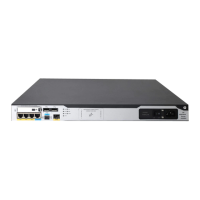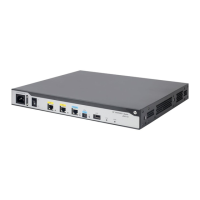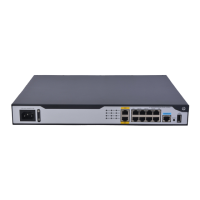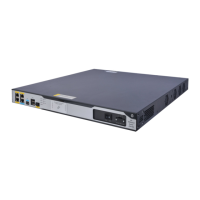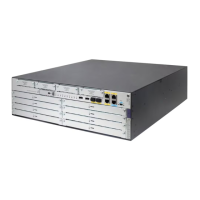116
You must enable Not Initial Terminal (NIT) mode on the BRI interface if the NI-type service provider switch
does not support SPID negotiation.
To enable NIT mode:
Ste
Command
Remarks
1. Enter system view.
system-view N/A
2. Enter ISDN BRI
interface view.
interface bri interface-number N/A
3. Enable NIT mode.
isdn spid nit
By default, NIT mode is disabled. The
BRI interface performs dynamic SPID
negotiation.
Configuring Q.931 negotiation parameters
Ste
Command
Remarks
1. Enter system view.
system-view N/A
2. Enter ISDN BRI or PRI
interface view.
interface interface-type
interface-number
N/A
3. Set the length of the call
reference value.
isdn crlength call-reference-length
By default, the call reference length is
2 bytes for CE1/PRI and CT1/PRI
interfaces and 1 byte for the BRI
interface.
The call reference identifies a call
registration or cancellation request
on the local interface.
4. Configure the CONNECT
ACK processing method.
isdn ignore connect-ack
[ incoming | outgoing ]
By default:
• After sending a CONNECT
request, ISDN waits for a
CONNECT ACK before it
changes to the ACTIVE state for
traffic transmission.
• After receiving a CONNECT
request, ISDN sends a
CONNECT ACK and changes to
the ACTIVE state.
5. (Optional.) Exclude the HLC
information element from the
outgoing SETUP message.
isdn ignore hlc
By default, all ISDN protocols except
5ESS and QSIG include the HLC
information element in the SETUP
message.
The high layer compatibility (HLC)
element provides high layer
compatibility check information for
the called party. The called party will
reject the call setup request if it
detects an incompatibility.
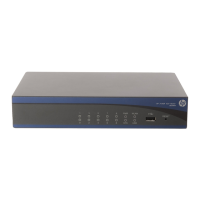
